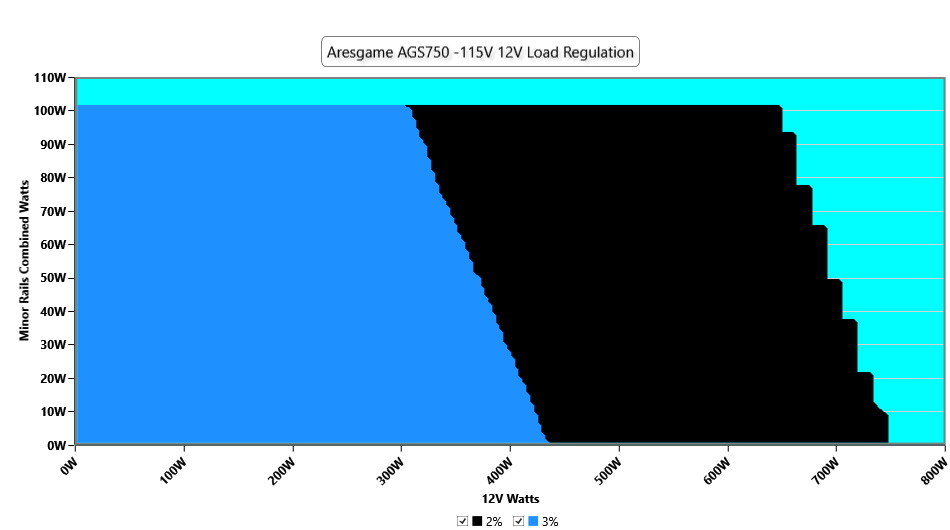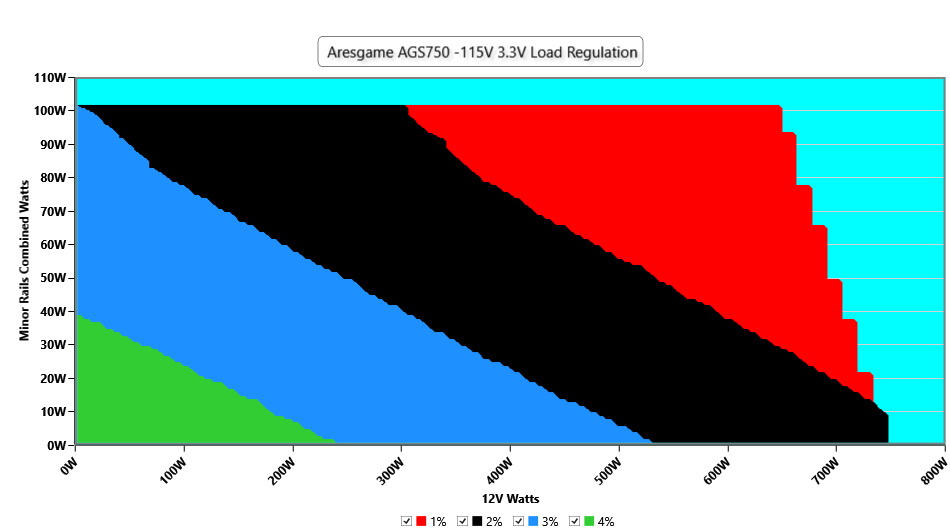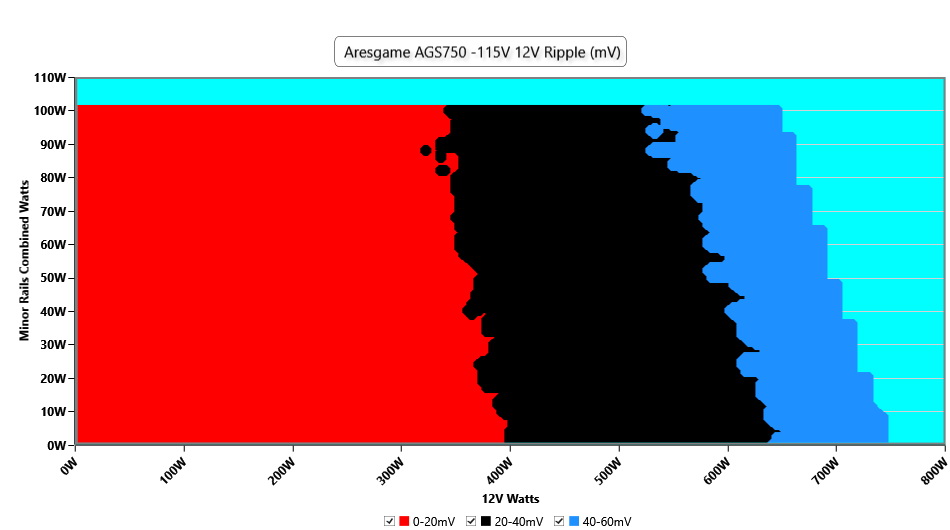Why you can trust Tom's Hardware
Protection Features
Check out our PSUs 101 article to learn more about PSU protection features.
|
OCP (Cold @ 28°C) |
12V: >78.6A (>125.76%), <11.482V |
|
OCP (Hot @ 43°C) |
12V: >78.4A (>125.44%), <11.501V |
|
OPP (Cold @ 28°C) |
916.89W (122.25%) |
|
OPP (Hot @ 40°C) |
916.91W (122.25%) |
|
OTP |
✓ (160°C @ secondary side) |
|
SCP |
12V to Earth: ✓ |
|
PWR_OK |
Accurate but lower than 16ms |
|
NLO |
✓ |
|
SIP |
Surge: - |
The OCP triggering point at 12V is too high for this platform, allowing for voltage on this rail to drop too low. We had to abandon the test since the PSU didn't shut down. OPP is set high, too, for this platform's capabilities. On the other hand, OCP is set correctly on the minor rails, and OTP is working correctly. Finally, there is no surge protection, and the NTC thermistor is not supported by a relay.
DC Power Sequencing
According to Intel’s most recent Power Supply Design Guide (revision 1.4), the +12V and 5V outputs must be equal to or greater than the 3.3V rail at all times. Unfortunately, Intel doesn't mention why it is so important to always keep the 3.3V rail's voltage lower than the levels of the other two outputs.



At some points the 3.3V rail is at a lower level than 5V.
Cross Load Tests
To generate the following charts, we set our loaders to auto mode through custom-made software before trying more than 25,000 possible load combinations with the +12V, 5V, and 3.3V rails. The deviations in each of the charts below are calculated by taking the nominal values of the rails (12V, 5V, and 3.3V) as point zero. The ambient temperature during testing was between 30 to 32 degrees Celsius (86 to 89.6 degrees Fahrenheit).
Load Regulation Charts




Efficiency Graph
Ripple Graphs
The lower the power supply's ripple, the more stable the system will be, which means components will be under less stress.




Infrared Images
We apply a half-load for 10 minutes with the PSU's top cover and cooling fan removed before taking photos with a modified Fluke Ti480 PRO camera able to deliver an IR resolution of 640x480 (307,200 pixels).
Get Tom's Hardware's best news and in-depth reviews, straight to your inbox.



The temperatures are not as high as in the AGS850 under the same operating conditions because of the lower capacity, hence the lower load. What makes an impression is the high temperature of the NTC thermistor. Without a bypass relay, this part gets hot so it cannot protect the PSU during a hot-restart, allowing for large inrush currents.
MORE: Best Power Supplies
MORE: How We Test Power Supplies
MORE: All Power Supply Content
Current page: Protection Features, DC Power Sequencing, Cross-Load Tests and Infrared Images
Prev Page Load Regulation, Hold-Up Time, Inrush & Leakage Current, Efficiency and Noise Next Page Transient Response Tests, Timing Tests, Ripple Measurements and EMC Pre-Compliance Testing
Aris Mpitziopoulos is a contributing editor at Tom's Hardware, covering PSUs.
-
Aeacus Correction:Reply
OEM of AGS750 is not Aresgame.
Aresgame is just a brand, like Corsair or EVGA.
OEM of AGS750 is: Shenzhenshi Jiumeng Electronics Technology Co.,ltd.
My proof, trademark registration application: https://uspto.report/TM/88619100 -
yrly59e It’s list price or cost may be $80 but I bought this unit at half that price on sale before word was out the efficiency wasn’t up to snuff. My guess is heavy discounting was built into design cuts.Reply
